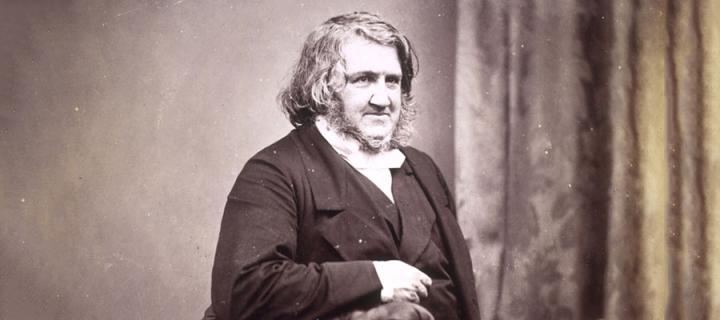James Young Simpson
Pioneer of anaesthetics, Professor of Midwifery, alumnus.

Background
Sir James Young Simpson (1811-70), was born in Bathgate and graduated as a Doctor of Medicine from Edinburgh in 1832.
In 1840, when only 28, he was appointed Professor of Midwifery (obstetrics and gynaecology), and rapidly consolidated its position as a popular and essential part of medical education.
Changing surgery
Simpson was the first to demonstrate the anaesthetic properties of chloroform in 1847 and immediately introduced it into obstetric and surgical practice in the Royal Infirmary.
The seal of approval was given in 1853 when Queen Victoria took chloroform for the birth of Prince Leopold.
The ability to anaesthetise patients revolutionised surgery in the nineteenth century.
Chloroform remained in use well into the twentieth century, when it was gradually replaced by more sophisticated and less toxic agents.
Simpson rapidly gained world-wide fame as the pioneer of anaesthesia, and was one of the dominant figures in the Edinburgh scene for the rest of his life.
The plaque
Simpson's plaque is located at Teviot Place, on the east wall of the main entrance of the Medical School Building.
In honour of Sir James Young Simpson
1811-1870
Pioneer of anaesthetics, Professor of Midwifery (1840-1870), graduate of the University

